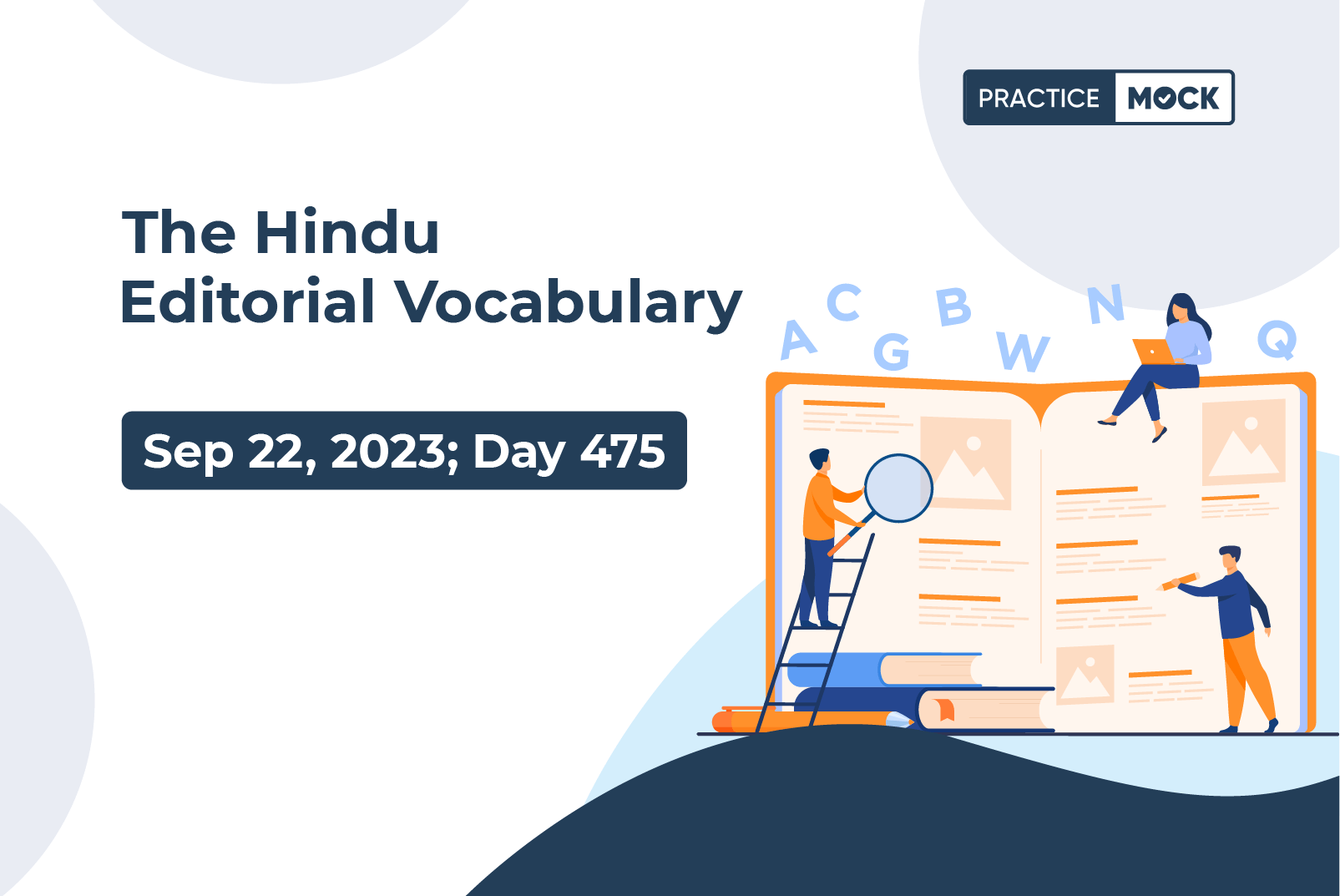| Difficult Word/ Phrase | Contextual Sense |
| Hypertension | A common disorder in which blood pressure remains abnormally high (a reading of 140/90 mm Hg or greater) |
| Grim | unpleasant or worrying |
| Cardiovascular | of or connected with the heart and the blood vessels (= tubes that carry blood around the body) |
| Continuum | a continuous series of things, in which each one is only slightly different from the things next to it, but the last is very different from the first |
| Obese | Excessively fat |
| Meagre | Deficient in amount, quality or extent |
| Sketchy | Giving only major points; lacking completeness |
| Cut down | reduce the size, amount, or quantity of something |
| Novel | Original and of a kind not seen before |
Silent killer: On hypertension and the first WHO report on the subject
India must get more people to keep blood pressure under control
Globally, hypertension (A common disorder in which blood pressure remains abnormally high (a reading of 140/90 mm Hg or greater)) affects one in three individuals and four out of five do not have it adequately controlled, according to the first World Health Organization (WHO) report on hypertension released on September 19. It is a grim (unpleasant or worrying) reminder that countries have done little to keep the biggest risk factor for death and disability under check despite the easy availability of inexpensive medicines. Uncontrolled blood pressure (over 140/90) is a main risk factor for cardiovascular (of or connected with the heart and the blood vessels (= tubes that carry blood around the body)) diseases such as heart attacks and stroke, and the most common cause of disease and death. It is important to note that health risks associated with hypertension do not begin at over 140/90. Instead, they operate in a continuum (a continuous series of things, in which each one is only slightly different from the things next to it, but the last is very different from the first) even below what is classified as clinical hypertension, especially in people who are diabetic, are obese (Excessively fat), and those who consume tobacco and alcohol. Hence, reports on hypertension levels in the population underestimate the cumulative risk of high blood pressure. In the WHO report that relies on 2019 data, 188 million Indians adults aged 30-79 years have hypertension. Of them, the condition has been diagnosed only in 37%, 30% are treated and a meagre (Deficient in amount, quality or extent) 15% of people have hypertension under control. Women appear to be marginally better than men in having the condition diagnosed, treated and controlled. Based on sketchy (Giving only major points; lacking completeness) data from parts of India, stroke incidence was found to be 108-172 per 1,00,000 people per year and the one-month case fatality rate was 18%-42%, as per a February 2022 study. In the Global Burden of Disease report, in 2019, heart attack was the leading cause of death and disability in India.
Studies have shown that excess salt consumption (over five grams a day) is responsible for 17%-30% of hypertension. While member States are required to achieve a 30% relative reduction in mean population intake of salt by 2025, India is yet to implement many components of WHO’s prescription to cut down (reduce the size, amount, or quantity of something) salt intake. A study in four Indian States published in 2021 found high salt and sugar content in packaged food items. Making front-of-pack nutrition labelling mandatory, encouraging reformulation of foods to cut down salt, and raising awareness in people to reduce salt intake should be urgently undertaken. India has, however, done well in improving blood pressure control in people with hypertension through the novel (Original and of a kind not seen before) India Hypertension Control Initiative (IHCI). Launched in 2018, the IHCI has successfully enrolled 5.8 million hypertensive patients for treatment in 27 States, as of June 2023. Importantly, 48% of patients enrolled at primary health centres and 55% at health wellness centres achieved blood pressure control as of March 2021. It is now important to greatly increase the number of hypertensive people on treatment and keep blood pressure under control.
Want to improve your vocabulary further? Download the Lists of Word-Meanings of Previous Months here.
- Sign Up on Practicemock for Updated Current Affairs, Free Topic Tests and Free Mini Mocks
- Sign Up Here to Download Free Study Material
Free Mock Tests for the Upcoming Exams
- RRB PO 2024 Free Mock Test
- RRB Clerk 2024 Free Mock Test
- SSC MTS Free Mock Test
- SSC CHSL Free Mock Test
- SSC CGL Free Mock Test
- GATE Mechanical Free Mock Test
- GATE Civil Free Mock Test
- NABARD Gr. A Free Mock Test
- SBI Clerk Mains Free Mock Test
- SSC CPO Free Mock Test
- AFCAT Free Mock Test
- CAT Free Mock Test
- NIACL Assistant Free Mock Test
- UIIC AO Free Mock Test
- UIIC Assistant Free Mock Test
- GIC Assistant Manager Free Mock Test
- NICL AO Free Mock Test
- Free SSC Live Test
- UPSC CSAT Free Mock Test
- CDS-I Free Mock Test
- RRB ALP Free Mock Test


